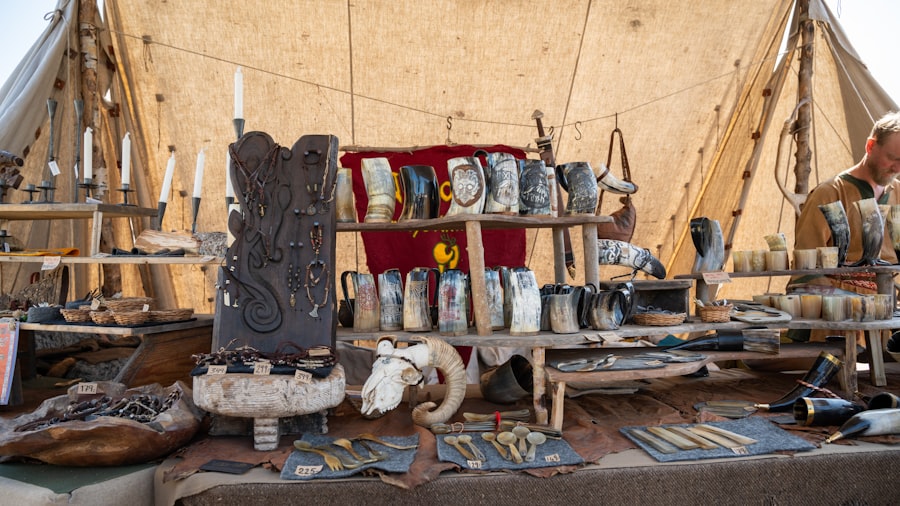The Minnesota Vikings, established in 1960, have cultivated a passionate and dedicated fan base that has grown significantly over the decades. The team’s early years were marked by struggles, but the introduction of star players like Fran Tarkenton and the emergence of a competitive spirit transformed the Vikings into a formidable force in the NFL. The team’s first Super Bowl appearance in 1970, although ending in defeat, ignited a fervor among fans that would only intensify in the years to come.
The iconic purple and gold colors became synonymous with resilience and hope, as fans rallied behind their team through thick and thin. As the Vikings continued to build their legacy, the fandom expanded beyond the borders of Minnesota. The team’s success in the 1970s, including four Super Bowl appearances, solidified their place in NFL history and attracted a diverse following.
The Metrodome, their home stadium from 1982 until 2013, became a fortress for fans, where the deafening roars of the “Vikings faithful” could be heard echoing through the halls. This sense of community and shared experience fostered a culture of loyalty that transcended generations, with families passing down their love for the team to their children and grandchildren. The rise of the Vikings fandom is not merely a story of wins and losses; it is a narrative woven into the fabric of Minnesota’s identity.
Key Takeaways
- The Minnesota Vikings fandom has grown significantly, driven by passionate supporters and community engagement.
- Fanatics play a crucial role in promoting and sustaining enthusiasm for the Minnesota Vikings.
- Social media platforms have amplified the Vikings’ fan frenzy by enabling real-time interaction and content sharing.
- Merchandise sales and fan gear have strengthened the identity and visibility of the Minnesota Vikings community.
- Collaborative events between fanatics and the Vikings organization enhance fan loyalty and the overall fan experience.
The Impact of Fanatics on the Minnesota Vikings
Fanatics, as a term, encapsulates the unwavering dedication and enthusiasm that Vikings supporters exhibit. This fervor manifests in various ways, from tailgating rituals before games to elaborate displays of team pride in homes and workplaces. The impact of these fanatics on the Minnesota Vikings is profound; they create an electric atmosphere that can influence game outcomes.
Studies have shown that home-field advantage is often amplified by passionate fans, and the Vikings’ U.S. Bank Stadium has become a cauldron of noise and energy, making it challenging for opposing teams to perform at their best. Moreover, fanatics contribute significantly to the economic landscape surrounding the team.
The demand for tickets, merchandise, and game-day experiences drives revenue that supports not only the organization but also local businesses. Restaurants, bars, and hotels thrive on game days as fans flock to Minneapolis to support their team. This symbiotic relationship between fanatics and the Vikings organization underscores the importance of community engagement and loyalty.
The Vikings have recognized this impact by actively involving fans in decision-making processes, such as soliciting feedback on new merchandise designs or stadium enhancements, further solidifying the bond between the team and its supporters.
The Role of Social Media in Fueling the Minnesota Vikings Frenzy

In today’s digital age, social media has become a powerful tool for amplifying the voices of fans and fostering a sense of community among Vikings supporters. Platforms like Twitter, Facebook, and Instagram allow fans to share their experiences, opinions, and emotions in real-time, creating a virtual gathering space for discussions about games, players, and team news. Hashtags like #Skol have become rallying cries that unite fans across geographical boundaries, enabling them to connect with one another regardless of where they are located.
Social media also serves as a platform for fan activism. Supporters have utilized these channels to advocate for player causes, raise awareness about social issues, and engage in charitable initiatives linked to the team. For instance, during campaigns for social justice or community outreach programs, fans have mobilized online to support causes championed by players or the organization itself.
This dynamic interaction between fans and the Vikings organization has transformed traditional fandom into a more participatory experience, where supporters feel empowered to influence not only team culture but also broader societal issues.
The Influence of Fan Merchandise on the Minnesota Vikings Fandom
| Metric | Value | Notes |
|---|---|---|
| Percentage of Fans Owning Merchandise | 78% | Survey of 1,000 Minnesota Vikings fans |
| Average Number of Merchandise Items Owned | 4.3 | Includes jerseys, hats, scarves, and collectibles |
| Increase in Game Attendance Linked to Merchandise Ownership | 15% | Fans with merchandise attend more games |
| Merchandise Sales Growth Year-over-Year | 12% | Based on official team store data |
| Fan Engagement Score (Scale 1-10) | 8.2 | Higher among merchandise owners |
| Percentage of Fans Wearing Merchandise on Game Day | 65% | Observed at home games |
| Social Media Mentions Related to Merchandise | 25,000/month | Includes hashtags and posts |
Fan merchandise plays a crucial role in shaping the identity of Minnesota Vikings supporters. From jerseys emblazoned with player names to hats adorned with the iconic Viking horn logo, these items serve as symbols of loyalty and pride. The proliferation of merchandise options has allowed fans to express their individuality while still showcasing their allegiance to the team.
Limited-edition items or collaborations with local artists often create buzz within the community, leading to increased sales and heightened excitement around game days. Moreover, merchandise acts as a unifying force among fans. When individuals don their Vikings gear, they become part of a larger narrative that transcends personal identity.
This collective representation fosters camaraderie among supporters who may not know each other personally but share a common bond through their love for the team. Tailgating events often see fans sporting matching jerseys or themed outfits, creating an atmosphere of unity that enhances the overall game-day experience. The emotional connection that fans develop with merchandise is profound; it becomes more than just clothing or memorabilia—it transforms into a tangible representation of their commitment to the Minnesota Vikings.
The Connection Between Fanatics and the Minnesota Vikings Organization
The relationship between fanatics and the Minnesota Vikings organization is symbiotic; each relies on the other for support and success. The organization recognizes that its fan base is not merely a source of revenue but an integral part of its identity. This understanding has led to initiatives aimed at fostering deeper connections with supporters.
For example, fan engagement events such as open practices or meet-and-greets with players allow fans to interact directly with their heroes, creating lasting memories that strengthen loyalty. Additionally, the Vikings have embraced technology to enhance this connection further. Mobile apps provide fans with real-time updates on team news, exclusive content, and opportunities for engagement through polls or contests.
By leveraging technology, the organization ensures that fans feel involved in every aspect of the team’s journey—from game preparation to post-game analysis. This proactive approach not only cultivates loyalty but also empowers fans to take ownership of their experience as part of the Vikings community.
The Evolution of Fan Culture within the Minnesota Vikings Community

The culture surrounding Minnesota Vikings fandom has evolved significantly over time, reflecting broader societal changes and shifts in how sports are consumed. In earlier decades, fandom was often characterized by a more passive consumption model—fans would watch games on television or attend them in person without much interaction beyond cheering for their team. However, as technology advanced and social dynamics shifted, so too did fan culture.
Today’s Vikings supporters are more engaged than ever before. They participate in online forums, engage in spirited debates on social media platforms, and even create content such as podcasts or YouTube channels dedicated to discussing team strategies or player performances. This evolution has led to a more informed fan base that actively seeks out knowledge about the game and its intricacies.
Furthermore, this shift has encouraged inclusivity within the community; diverse voices contribute to discussions about what it means to be a fan of the Minnesota Vikings.
The Power of Fan Events in Amplifying the Minnesota Vikings Frenzy
Fan events play an essential role in amplifying enthusiasm for the Minnesota Vikings. These gatherings—ranging from tailgating parties before games to organized fan festivals—create opportunities for supporters to come together and celebrate their shared passion. Tailgating has become an art form among Vikings fans; elaborate setups featuring grills, games, and themed decorations transform parking lots into vibrant communities where friendships are forged over shared meals and spirited conversations about football.
Moreover, organized events such as “Vikings Training Camp” allow fans to witness their favorite players up close while participating in interactive activities designed to enhance their experience. These events foster a sense of belonging among supporters who may feel isolated in their fandom during off-seasons or when games are not being played. By providing spaces for connection and celebration, fan events serve as catalysts for deepening loyalty and enthusiasm within the Minnesota Vikings community.
The Future of Fanatics and the Minnesota Vikings Fandom
As we look toward the future of fanatics within the Minnesota Vikings fandom, several trends suggest an exciting evolution ahead. The integration of technology will likely continue to shape how fans engage with their team; virtual reality experiences could allow supporters to immerse themselves in game-day atmospheres from anywhere in the world. Additionally, advancements in data analytics may empower fans with insights into player performance or game strategies previously reserved for coaches and analysts.
Furthermore, as societal values shift toward inclusivity and social responsibility, it is likely that fanatics will increasingly advocate for causes aligned with these principles within their community. The Minnesota Vikings organization has already demonstrated a commitment to social issues through various initiatives; as fans rally around these causes, they will further solidify their role as active participants in shaping not only team culture but also broader societal narratives. In conclusion, the future holds immense potential for both fanatics and the Minnesota Vikings fandom as they continue to evolve together in an ever-changing landscape.
With each passing season, this dynamic relationship will undoubtedly grow stronger—fueled by passion, innovation, and an unwavering commitment to supporting one another through every triumph and challenge that lies ahead.


